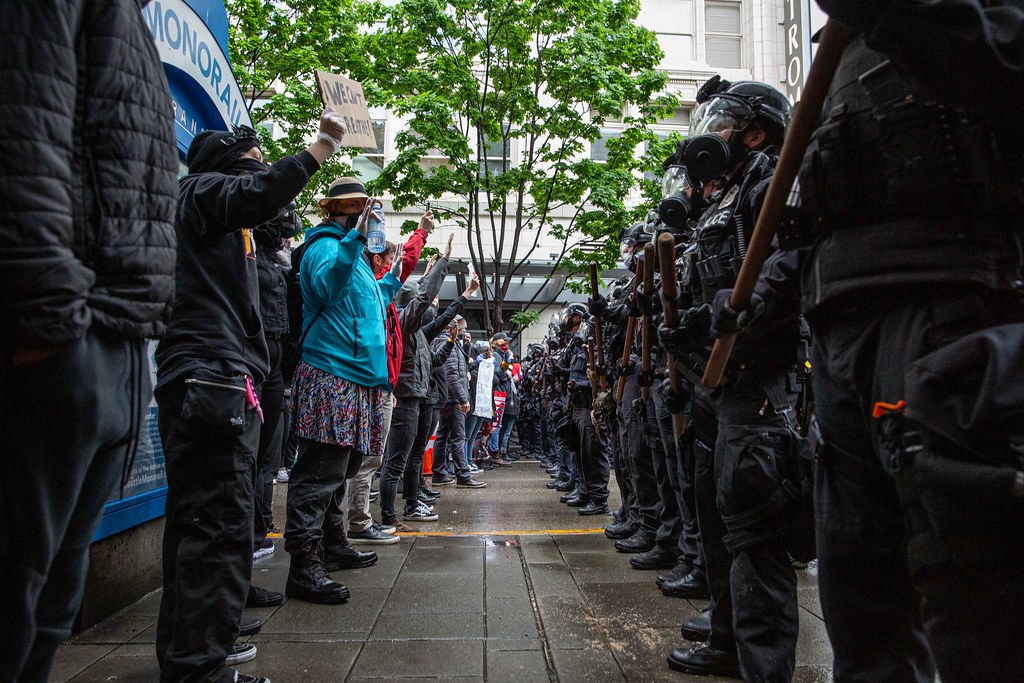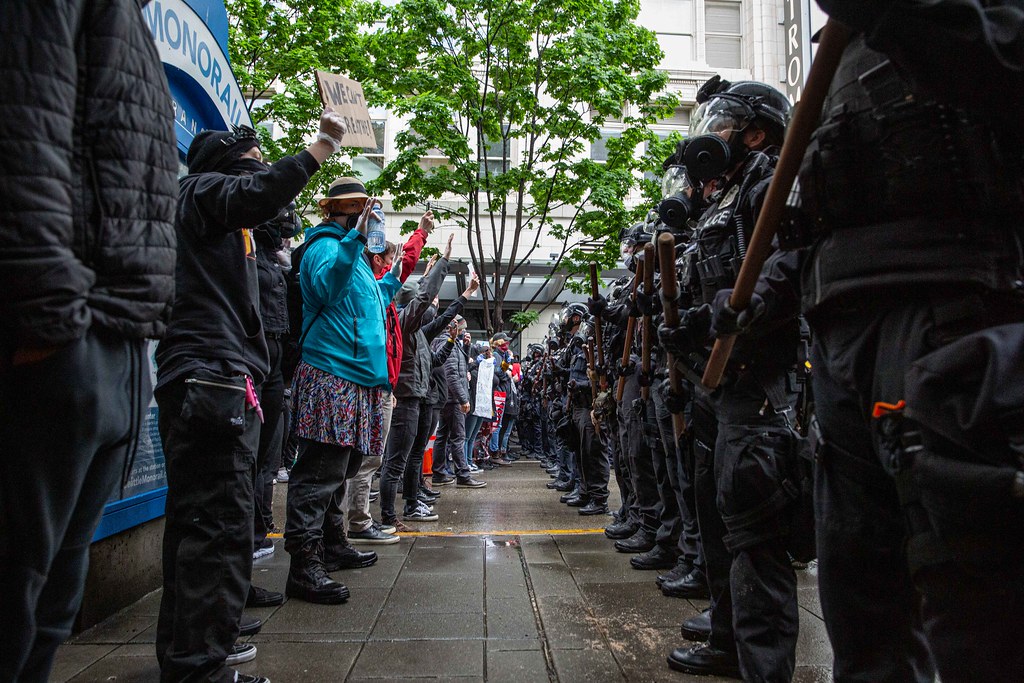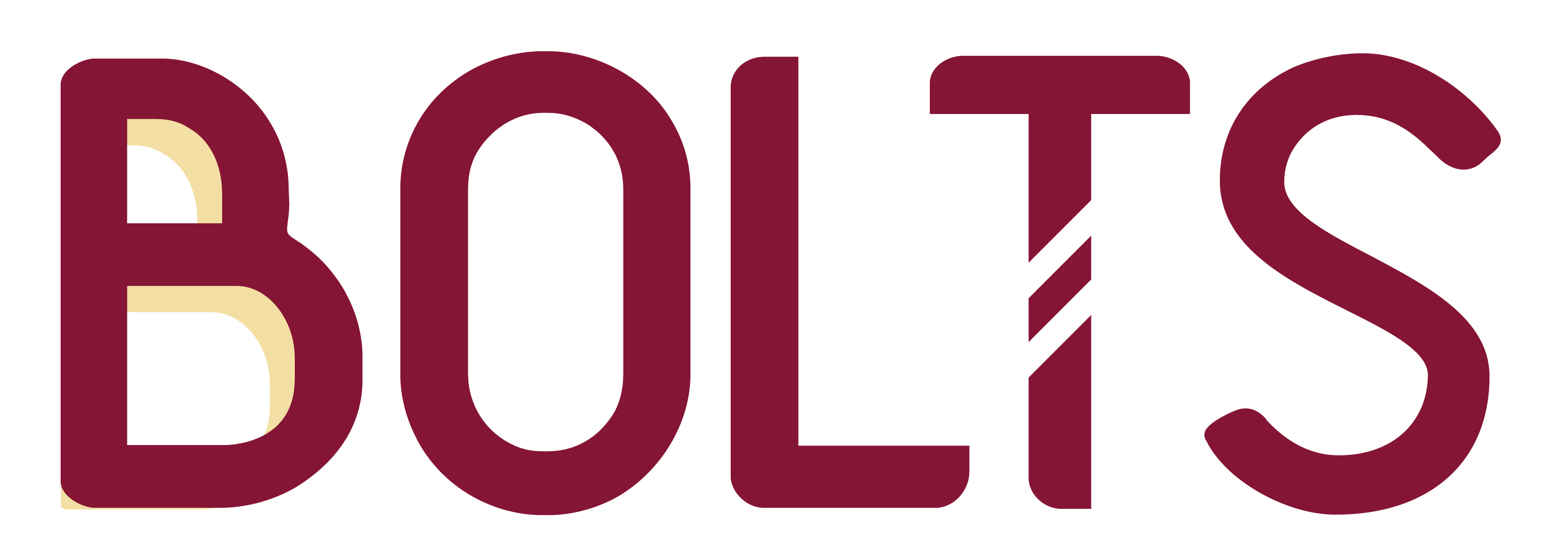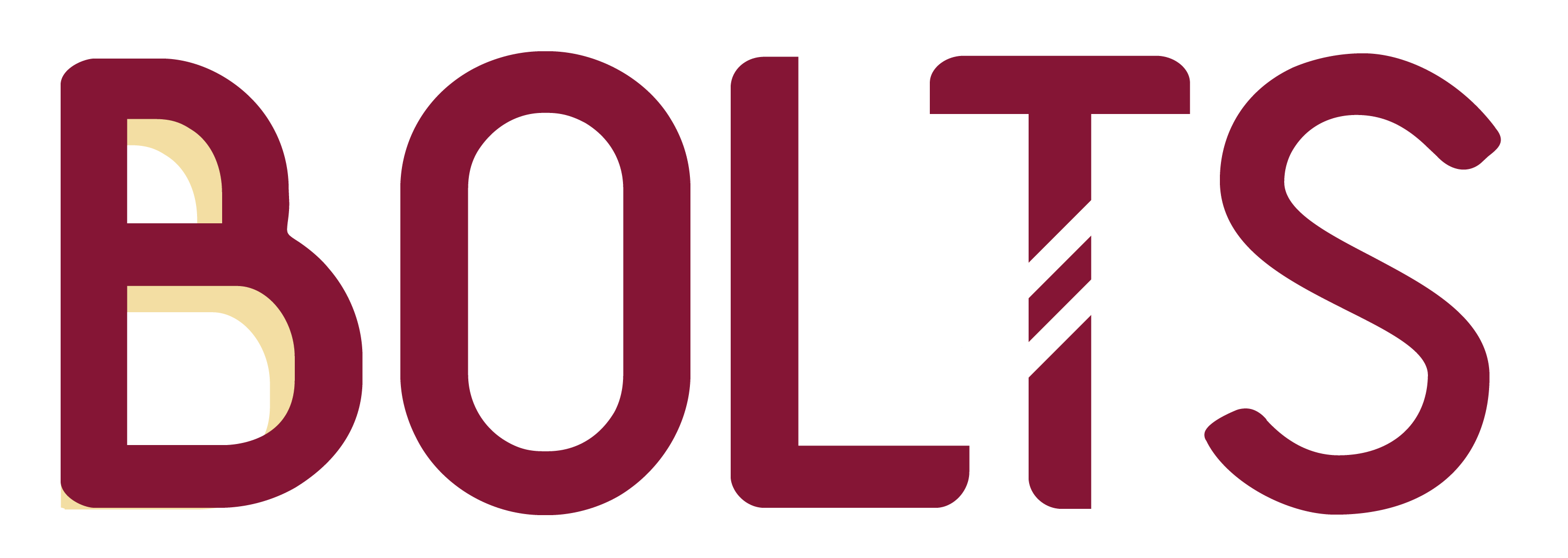How Unequal Perceptions of Protest and Violence Shape Black Lives Matter
Juliet Hooker, a scholar of Black political thought, discusses Black Lives Matter, asymmetrical perceptions of violence, and the role that images play in our politics.
Daniel Nichanian | June 4, 2020


This article originally appeared on The Appeal, which hosted The Political Report project.
Juliet Hooker, a scholar of Black political thought and racial justice, discusses Black Lives Matter protests, asymmetrical perceptions of violence, and the role that images play in our politics.
Over the weekend, seeing images of George Floyd’s killing by a Minneapolis police officer and its aftermath, I found myself repeatedly thinking back to an essay I read years ago, “Black Lives Matter and the Paradoxes of U.S. Black Politics.” The 2016 article questions the frequent demands that Black protesters engage in “appropriate” politics when they are calling for racial justice, and challenges us to think about why U.S. society tends to perceive some people as more violent than others regardless of what they do.
Juliet Hooker, the article’s author and a political theorist at Brown University, has studied Black political thought, the reception of protests, and racial justice. I reached out to discuss what her article can tell us about the protests of the last week and about the police’s response to them.
In the course of our conversation, Hooker warned about the disparities in “who is prone to being viewed already as violent.” She argued that a “mistaken romantic recollection” of past activism makes people forget some of its radical aspects. And she made the case that U.S. society continually awaits images of Black people suffering to get mobilized, whether brutal scenes like George Floyd’s killing or the risks of joining rallies during a pandemic. “We require these images of Black death … to maybe move people to feel some sort of care and concern,” she said.
The Q&A’s transcript, which has been lightly edited and condensed, is available below. You can also listen to it below, or access it directly on SoundCloud and iTunes, where you can also subscribe to our content.
In your 2016 article, you suggest that, before we even discuss what forms of protest are justified or efficient, we need to first understand that there are disparities in who and what gets labeled “violent” to start with. You call this an “asymmetrical vulnerability” to being perceived as violent. How do you analyze the events of the past week in light of that idea?
I think that there are various ways in which we can think about that idea of who is prone to being viewed already as violent, and who is not, irrespective of their actions. What we’ve seen in the protests against the killing of George Floyd is that the actions by protesters, when there have been instances of looting or of property being burned, or Confederate statues being graffitied, etc, that these have been immediately viewed as violent and as aggressive acts that are outside of what is viewed as the norm for a civil protest, whereas the actions by the police are viewed as justified, even when we see instances such as police cars ramming into protesters who’re just standing there. There’ve been so many reports of police pepper-spraying protesters who were not doing anything or beating them with batons, etc. So these actions, which are clearly violent, aren’t viewed because they’re coming from agents of the state who are thought to have a monopoly on violence. One way to understand this in particular in these current protests is that they’re also harking back to racialized views of Black people, Black men in particular, as prone to violence, that begin during the period of slavery and that continue to this day, when you think about Ferguson and the Michael Brown shooting and this idea that white police officers always fall back on that there was this monstrous, scary Black man who was menacing them and that’s why they shot them irrespective of what the person is doing.
What do you see as the social or linguistic processes that go into production of these perceptions? To the extent it’s a matter of language or media frames, how do different publics perceive these events differently, especially given media fragmentation and social media?
What we’re looking at now are, of course, these viral videos, and also the sort of live cable news coverage where you have reporters that are contemporaneously narrating what’s happening. One of the interesting things to think about here is that one of the solutions that has been put forward for excessive use of force by the police has been the use of body cameras.
But I think what we see when we look at the videos is that there is no way to guarantee that people will see the same thing. People still look at these videos and see them through the lenses of their own racialized views of the world. When you think about, for example, the videos of Eric Garner, the one of George Floyd, many of those who are predisposed to defend the police are going to focus on, “Well, did they comply with police demands? Did they comply quickly enough?” Even in the cases in which people have been shot in the back, it’s like, “Well, they looked like they were running away, why didn’t they turn? Why didn’t they do X, Y and Z?” One of the things that we need to sit back and think about is that there is a level of interpretation that’s happening with any of these images, and that we are bringing everything that we know about the world to that interpretation.
The media also plays a role in this. The way in which headlines or articles will, for example, talk about protesters as active agents, use the active voice to say they were looting, or they were rioting, or they were setting fires, as opposed to the way in which they describe the killing of unarmed Black people by the police. And it’ll be somebody like George Floyd died in police custody. Died. Who did it? Nobody is identified as the person who did it. The media reluctance, almost, to identify the police as anything but neutral is a problem for understanding what’s happening. Because one of the different things about these protests is that they’re protesting against the police. When the protest is against the police itself, how do we expect the police not to have a kind of emotional investment or kind of reaction to the protesters? So we interpret their actions as if they’re neutral, but they’re actually also a participant in this very thing that they’re then being told to manage.
Your essay also analyzes what you call expectations of respectability and exemplarity that African Americans looking to resist racial injustice are met with. “When other citizens and state institutions betray a lack of care and concern for black suffering, which in turn makes it impossible for those wrongs to be redressed, is it fair to ask blacks to enact ‘appropriate’ democratic politics?” How has this dynamic manifested itself in the Black Lives Matter movement?
When Black Lives Matter first emerged and had the protests in Ferguson and then the protest for the killing of Freddie Gray in Baltimore, there were a lot of critiques from white observers but also some Black leaders from the civil rights generation, even President Obama. And there were a number of people who criticized them for not adhering to what they saw as the script of the civil rights movement in the 1960s. They weren’t the well-dressed, very disciplined protesters who did not engage in any kind violence no matter how much they were provoked or hurt by the police. There is a sense in which Black Lives Matter doesn’t live up to that frame.
I think we have a mistaken romantic recollection and public memory of the civil rights movement that actually is shaping the way in which we respond to contemporary movements, but that is, in fact, misemembering what happened in the 1960s, which is that at the time people like MLK were called outside agitators. People responded to civil rights demonstrators and argued that they were creating conflict, that they were creating racial strife, that they were doing a lot of the things which we now accuse contemporary Black Lives Matter protesters of. I think you see the way in which this misreading of the history of Black protest, particularly the civil rights movement, is then applied as the standard against which they are judged, and judged to not be succeeding. You still have this sense of, “Well, why is there violence? Why can’t people just be nonviolent? Why do they have to riot? Why can’t they maintain the same kind of civil disobedience that the civil rights movement did?”
Could you say more about what you’re calling this script of the 1960s movement and its misreading? And you’ve also worked extensively on the history you can of Black political thought and on earlier figures such as Frederick Douglass, and he also had to navigate questions about the proper strategies to employ. How did the figures you have worked on think through some of these questions?
This is a really important point to keep in mind, which is that there has actually been a long tradition in Black politics of thinking about how to do protest, what is most effective. And one of the interesting things that we see is that from the very beginning there isn’t this kind of clear distinction between, let’s say, civil and uncivil forms of protests, between violence and non violence as two completely opposite things.
For example, if you begin with slavery, abolitionists, Black abolitionists, Black fugitives, were literally committing a crime by running away. They were stealing themselves. It was illegal for a slave to flee. And so the idea that engaging in political action for the sake of Black freedom and Back life had to adhere to what was the law of the land could not work when the law was racist.
Even in the 1960s, if you think about those protests as well, there are ways in which methods were employed by things like curfews, things like refusing to give permits to protests and people going ahead and protesting anyway, even though it was declared illegal. There is a way in which this has always been something that Black thinkers have had to grapple with, that you have to think about what is going to be effective.
Here’s the issue: If you are asking people to engage in civil disobedience, the point of engaging in civil disobedience is to show that you respect the democratic norms of the society in which you live, but you think some things are unjust and need to be changed. But if you’re in a system where you are not afforded the same rights of citizenship even to this day, in which there have been, continue to be killing of Black people by the police with impunity, and there seems to be no way to address that either electorally, or through lawsuits, or through all the other forms of activism, then, saying that you shouldn’t protest violently—well it’s like, what other forms of redress are there? If the system is fundamentally unjust, then part of the critique is precisely that there needs to be radical transformation. If you think about the 1960s, what people were asking for wasn’t something minor. It was a major change in how a large part of the country was organized. And so we have to grapple with the fact that what racial justice requires is always going to be controversial and difficult and is not easily achieved through some of the more established forms of political activism.
On this point, earlier this spring we saw protests against shutdowns that in Michigan featured people with weapons coming to the Capitol. How do you analyze reactions to that?
I think that one important difference between the anti-lockdown protests is that they were mostly or almost universally white protesters. One of the key issues here is that one of the things that shapes the ability or the perception of Black protest is this inability to express Black anger. So if you think about the notion that anger at injustice is justified. But Black anger has been seen as dangerous. It has been seen as something to be feared. And so even when protesting injustice, and even when it’s something that you should be angry about, somehow there’s always an expectation that Black people can’t show anger because that will alienate white support, that will make them seem unreasonable, this is going to not create sympathy for your cause.
Now, the interesting thing, of course, is that that same constraint isn’t necessarily placed on white protesters, as we saw with the anti lockdown protests. There are these guys who, it’s not simply anger, but who are actually showing up with guns and who are nevertheless treated with respect, who are not killed. The contrast between that and then the overreaction, the use of excessive force by the police to counter protests, peaceful protesters who are trying to protest these acts of state violence is really glaring. I think it comes back to this idea of who is allowed to show anger, in the case of the anti lockdown protesters, at perceived restraints on their rights. This goes back to the ways in which, in U.S. society, the notion of who has the right to be a full human being, to express anger, to have an expectation that your needs and your interest as a citizen will be at the forefront of the political agenda, that’s reflected in these very asymmetrical reactions to these protests, and also the fact that grievances that are driving them are so normatively different.
I want to ask you about one final idea from your 2016 essay: You write about an “economy of suffering.” The argument is that U.S. society requires of Black people that they suffer, and display their suffering, in order to get redress. Can you speak more on what you mean by “economy of suffering”?
What I mean by that is to say that the U.S. remains, to make a very obvious point, a society that’s shaped by racial hierarchy and racial inequality and racism. What happens in these situations in which you have these instances of clear racial harm and racial injustice, is that nevertheless it’s not seen as the responsibility of everyone in society necessarily to protest against police violence. So it becomes the task of Black people who are already the ones who are suffering police violence, to go out and put themselves in harm’s way, and put themselves in danger of further aggression by the police in order to try to end this problem. So there is loss upon loss.
In the context of the pandemic, where protesting also is putting these folks who are out there demanding justice, possibly, at risk of infection, it’s as if we’re literally asking people to die for democracy, to die for the sake of making this a society that lives up to its stated commitments to equal rights for all. Part of what I’m trying to get at by talking about this economy of suffering is this idea that it’s those who are already vulnerable, those who are already suffering injustice who need to go and protest those injustices and seek change.
But it also gets at another issue, which is the fact that we require these images of Black death—of some sort of seemingly incontrovertible moment, in the case of George Floyd that video of the officer who was literally standing on his neck—that is what we require in order to be mobilized. What is required are these scenes over and over again of Black pain, of Black death, of Black suffering, in order to maybe move people to feel some sort of care and concern for these forms of injustice, and that in itself is something that takes a toll on people.
I also think that the pandemic has exposed some of the deep structural and racial inequalities within the United States. We have been in a situation in which over 100,000 people have died in the United States, and people have been dealing with these losses, both loss of life, loss of jobs for some, loss of human contact. The U.S. is at a moment, I think, where there’s a lot of folks who are wondering whether the system is working, and who is it working for. One question for me, thinking about where we go from here, is trying to think about what comes of this, where do people go, and whether it’s possible to really sustain a kind of broad, multiracial cross-class coalition that is really going to try to address questions of police violence and racial injustice.


